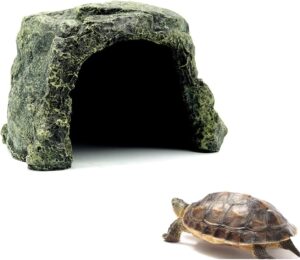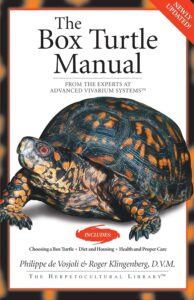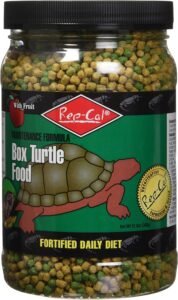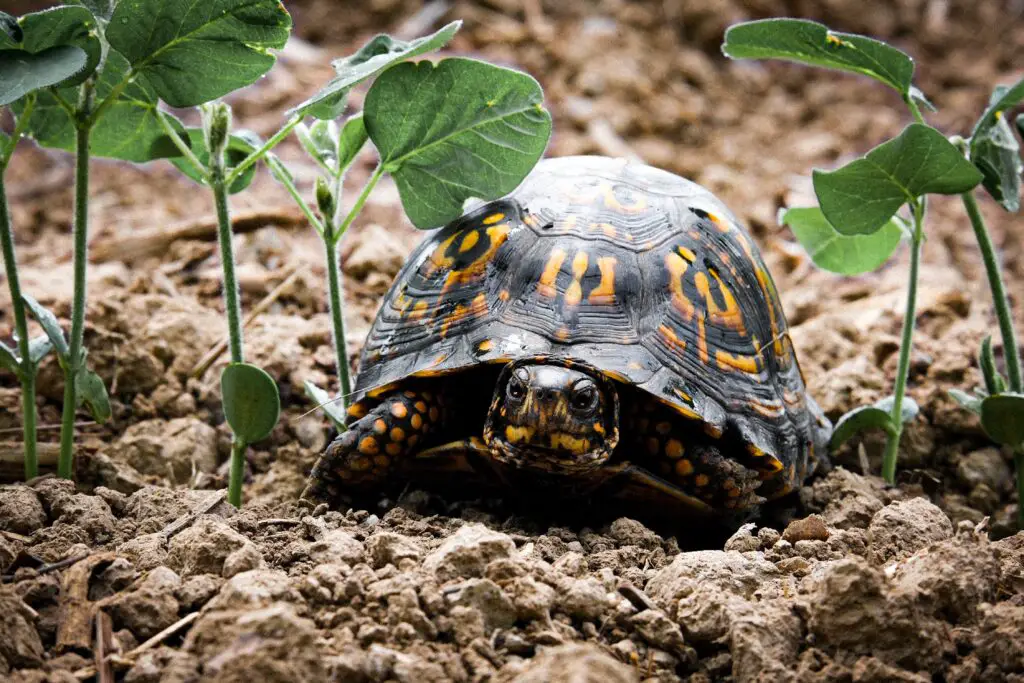What does a box turtle look like
What does a box turtle look like: In the vast world of reptiles, box turtles hold a special place as captivating creatures that have roamed the Earth for millions of years. With their unique appearance and intriguing behavior, they have captivated the curiosity and imagination of both scientists and nature enthusiasts alike.
Box turtles belong to the genus Terrapene, which consists of several distinct subspecies found in North America, including the Eastern box turtle (Terrapene carolina carolina) and Western box turtle (Terrapene ornata). These terrestrial reptiles are known for their characteristic dome-shaped shells, intricate color patterns, and enigmatic lifestyle.
A Species Worth Knowing
 Understanding the physical characteristics of box turtles is crucial not only for identifying different subspecies but also for appreciating their unique adaptations to their environment. As highly adapted reptiles, they possess extraordinary features that aid in locomotion, defense mechanisms, and survival.
Understanding the physical characteristics of box turtles is crucial not only for identifying different subspecies but also for appreciating their unique adaptations to their environment. As highly adapted reptiles, they possess extraordinary features that aid in locomotion, defense mechanisms, and survival.
By delving into their physical appearance, we gain valuable insights into their evolutionary history as well as how they navigate through various habitats. Moreover, comprehending the distinct traits of box turtles assists in preserving these magnificent creatures.
As human activities continue to encroach upon natural habitats, resulting in habitat fragmentation and destruction, knowledge about these extraordinary reptiles becomes more essential than ever before. By understanding what a box turtle looks like, we can better protect them from potential threats by creating suitable conservation strategies that focus on preserving their specific needs.
General Physical Characteristics
Size and Weight Variations Among Different Subspecies
What does a box turtle look like: Box turtles are a diverse group of reptiles, comprising several subspecies with distinct size and weight variations. On average, adult box turtles measure between 4 and 8 inches in length, but specific subspecies have differing size ranges.
For instance, the Eastern Box Turtle (Terrapene carolina carolina) tends to be smaller compared to its Western counterparts, reaching an average length of around 4.5 to 6 inches. Conversely, the Three-Toed Box Turtle (Terrapene carolina triunguis) can grow up to 8 inches in length.
Moreover, weight varies significantly among individuals due to factors such as age, gender, and overall health. Adult box turtles generally weigh between 8 ounces and 1 pound.
Shell Structure and Coloration: What does a box turtle look like
The shell is one of the most distinctive features of a box turtle. It consists of two main parts: the carapace (top shell) and the plastron (bottom shell).
The carapace is usually high-domed in terrestrial species like the Eastern Box Turtle and flatter in semi-aquatic subspecies such as the Gulf Coast Box Turtle (Terrapene carolina major). The top shell is composed of bony plates covered by large keratinous scales known as scutes.
Distinguishing Features of Carapace and Plastron The carapace typically exhibits rich colors ranging from shades of brown and olive green to black.
It is adorned with intricate patterns consisting of radiating lines or blotches that vary between subspecies. Some box turtles display relatively plain shells with minimal markings while others have ornate patterns that contribute to their individuality within their respective subspecies.
Limbs, Head, and Tail Description: What does a box turtle look like
Box turtles have four limbs, each containing a different number of toes. The front limbs possess four toes, while the hind limbs consist of five.
This distinction assists in identifying box turtle species as some subspecies may exhibit variations in toe structure and number. The feet are equipped with claws that serve multiple functions.
The claws on the front feet are longer and curved, aiding in digging burrows for hibernation or finding food underground. Meanwhile, the hind claws are relatively shorter and more straightened to assist with climbing obstacles such as low vegetation or tree trunks.
The head of a box turtle is characterized by its elongated shape and a slightly hooked beak-like mouth structure. This adaptation allows them to consume various types of food, including insects, fruits, vegetables, and even small vertebrates like worms or snails.
Additionally, their eyes are positioned on either side of the head and exhibit a range of colors from dark brown to reddish-brown hues. These eyesight adaptations enable box turtles to detect movement and distinguish shapes effectively.
Their tails vary in length among subspecies but generally possess an average appendage length that aids in communication signals among conspecifics while also serving as a defense mechanism against potential predators. Overall, understanding these general physical characteristics is crucial for appreciating the diversity within the fascinating world of box turtles.

Shell Details
Shape Variations Among Subspecies
The shell of a box turtle, often referred to as its carapace, exhibits notable variations in shape among different subspecies. These shape differences are primarily influenced by their habitat preferences and lifestyles. Terrestrial box turtles typically possess high-domed shells that afford them optimal protection when retracting into their shell as a defensive mechanism against predators.
The elevated dome shape allows for the complete withdrawal of the head, legs, and tail within the shell cavity, providing an impenetrable barrier. On the other hand, semi-aquatic box turtles display flatter shells with more streamlined profiles to facilitate easier movement in water while maintaining some level of protection.
High-Domed Shells for Terrestrial Species
Terrestrial box turtles have evolved high-domed shells that serve multiple functions essential for their survival on land. The height and curvature of the shell provide ample space for internal organs while minimizing vulnerability to potential threats from above.
This design offers maximum protection when retracted into the shell; it becomes practically impossible for predators to access any part of the turtle’s body. Furthermore, this dome-shaped structure helps retain moisture within the terrestrial box turtle’s body, enabling them to endure dry environments more effectively.
Flatter Shells with Streamlined Profiles for Semi-Aquatic Box Turtles
In contrast to terrestrial counterparts, semi-aquatic box turtles have adapted flatter shells with streamlined profiles to enhance their agility and maneuverability in aquatic habitats such as ponds or marshes. The flattened shape reduces drag resistance while swimming and allows them to glide through water effortlessly. Additionally, these thinner shells enable better buoyancy control and provide greater flexibility when navigating aquatic environments that feature dense vegetation or complex topography.
Scutes: The Building Blocks of the Turtle Shell
 The shell of a box turtle consists of individual plates called scutes, which interlock to form a protective shield. These scutes are composed mainly of keratin, the same substance found in our hair and nails.
The shell of a box turtle consists of individual plates called scutes, which interlock to form a protective shield. These scutes are composed mainly of keratin, the same substance found in our hair and nails.
The keratinous scutes provide strength and durability to the shell’s structure, shielding the turtle’s vital organs from potential harm. The scutes are not fixed but grow gradually over time, allowing for expansion as the turtle grows.
Explanation of Scute Composition (Keratin)
Keratin is a fibrous structural protein that forms the basis of various external coverings in animals. In box turtles, it composes the outer layer of each scute and contributes to their toughness and resistance to wear.
This keratinous layer acts as a protective barrier against physical abrasions, environmental elements, and potential predators. It also provides insulation against extreme temperatures while aiding in maintaining internal body moisture.
Growth Rings on Scutes Indicating Age
Just like tree rings that indicate age and growth patterns, growth rings can also be observed on box turtles’ scutes to estimate their age. Each year during periods of active growth, new layers are added to the existing scutes resulting in visible concentric rings on their surface.
Counting these rings can provide an approximate estimation of the turtle’s age; however, it should be noted that this method becomes less reliable as turtles get older since some species may cease growing or exhibit slower growth rates with age. By understanding these intricate details about the shell structure and composition of box turtles, one gains deeper insights into their remarkable adaptations and unique characteristics within different subspecies.
Head and Facial Features
Beak-like mouth structure for omnivorous diet
What does a box turtle look like: The head of a box turtle is a remarkable aspect of its overall appearance. One notable feature is its beak-like mouth structure, which allows the turtle to consume a diverse range of food items.
This omnivorous diet consists of both plant matter, such as fruits, vegetables, and leaves, as well as small invertebrates like insects and worms. The beak is constructed from a hard keratinous material that enables the turtle to efficiently break down its food into smaller pieces.
Eyes: Positioning, coloration, and functionality
Positioned on either side of the head, the eyes of a box turtle play an essential role in its survival. They are relatively small but possess impressive visual acuity. The positioning allows for a wide field of view, allowing the turtle to detect potential threats or prey from various angles.
The coloration of their eyes can vary among individuals and subspecies; commonly observed colors include shades of brown or yellow. Functionally, the eyes provide box turtles with excellent depth perception and enable them to distinguish between different objects in their environment accurately.
This skill proves particularly useful when locating food sources or identifying potential predators. Additionally, box turtles have an innate ability to retract their eyes partially into their skull for protection when they withdraw into their shell.
Nose: Sense of smell adaptations
A box turtle’s nose possesses fascinating adaptations that contribute to its keen sense of smell. Located on the upper part of the head between the eyes and extending slightly beyond them, it consists of two nostrils called nares.
These nares are capable of picking up scents from its surroundings with great precision. Box turtles have an exceptional olfactory sense that aids in locating food sources and detecting potential mates over considerable distances.
They can detect the scent of decaying vegetation, ripe fruits, and even tiny insects buried beneath the soil. This heightened sense of smell also plays a crucial role in social interactions, helping them recognize other individuals of their species.
By having a beak-like mouth structure for its omnivorous diet, well-positioned and highly functional eyes, as well as a nose with remarkable sense of smell adaptations, the head and facial features of a box turtle are both intricate and finely attuned to its surroundings. These characteristics allow box turtles to navigate their environment effectively while securing food sources and avoiding potential threats.
Limbs, Feet, Claws: What does a box turtle look like
Description of Forelimbs vs Hindlimbs
 When examining the physical characteristics of a box turtle, it is crucial to pay attention to their limbs. Box turtles have four limbs, each serving distinct purposes to aid their survival in different environments.
When examining the physical characteristics of a box turtle, it is crucial to pay attention to their limbs. Box turtles have four limbs, each serving distinct purposes to aid their survival in different environments.
The forelimbs are slightly shorter and more robust compared to the hindlimbs. This asymmetry allows them to perform various tasks effectively.
The forelimbs are primarily designed for digging and burrowing into the ground. They possess strong muscles and sharp claws that make them well-suited for this purpose.
These front claws are curved and sturdy, enabling box turtles to efficiently dig holes in the soil for shelter, protection from predators, or hibernation during colder months. On the other hand, the hindlimbs are slightly longer than the forelimbs and are responsible for providing balance and propelling movement.
While not as specialized for digging as the front limbs, they still possess claws that aid in scratching at surfaces or gripping onto objects when necessary. The hindlimbs also play a vital role in helping box turtles navigate varying terrains like rocks or fallen branches.
Functionality: Digging Capabilities Using Front Claws
The front claws of a box turtle serve as powerful tools for digging through soil or leaf litter with ease. These sharp appendages enable them to create burrows underground where they can seek refuge from predators or extreme weather conditions. The curved shape of their front claws allows them to effectively scoop out dirt while their robust muscles provide strength and leverage.
Box turtles rely on their exceptional digging capabilities not only for shelter but also for finding food sources such as insects, earthworms, and roots buried beneath the surface. By using their front claws with precision, they can excavate shallow pits and expose hidden prey items or unearth vegetation essential to their omnivorous diet.
Furthermore, the front claws play a crucial role during nesting season when female box turtles dig holes to lay their eggs. These claws are adept at creating deep and secure nests to protect the developing eggs from potential predators or disturbances.
Adaptations for Climbing or Swimming
What does a box turtle look like: While box turtles are primarily terrestrial creatures, some subspecies exhibit adaptations that allow them to climb or swim proficiently. These adaptations are evident in their limb structure and specialized features. For climbing, certain subspecies possess slightly longer limbs and more curved claws compared to their counterparts.
These modifications enable them to grasp onto branches and climb trees with relative ease, seeking refuge in elevated areas or accessing food sources such as fruits, berries, or small animals. In contrast, box turtles adapted for swimming have relatively shorter limbs compared to those specialized for climbing.
They possess webbed feet that aid in propulsion through water bodies like ponds or streams. The toe webs increase surface area, allowing for greater efficiency in swimming motions.
It is important to note that while some box turtles may exhibit these adaptations for climbing or swimming, others may lack such specialized features altogether. This diversity reinforces the adaptability of box turtles as a species across different habitats and environments they inhabit throughout their range.
Tail Characteristics: What does a box turtle look like
The Length Variations Among Subspecies
The tail of a box turtle is an intriguing aspect of its physical appearance, displaying considerable variations in length among different subspecies. These variations are influenced by factors such as the turtle’s environment and evolutionary adaptations. On average, the tail length ranges from one-third to half the length of the turtle’s carapace, but this can differ significantly between subspecies.
For instance, the Eastern Box Turtle (Terrapene carolina) typically has a shorter tail compared to the Mexican Box Turtle (Terrapene mexicana). Additionally, male box turtles generally possess longer tails than females.
Usage: Communication Signals; Defense Mechanism
The box turtle’s tail serves multiple important functions in its daily life. One primary purpose is communication with other turtles. During courtship and mating rituals, males often engage in elaborate displays involving their tails as a means of attracting females.
They may lift their tails high or wag them side to side to communicate their intentions and establish dominance over rivals. Moreover, the tail also acts as a defense mechanism when faced with potential threats or predators.
When feeling threatened or provoked, a box turtle may retract its limbs into its shell while simultaneously tucking its head down against its plastron and closing it tightly shut. In this defensive posture known as “turtling,” the tail plays an essential role by covering and protecting vulnerable areas such as the hind legs and rear portion of the shell.
Aesthetics: Coloration and Patterns on Tails
The coloration and patterns found on a box turtle’s tail can be quite captivating. While not as prominent or varied as those on their shells, these markings contribute to each individual’s uniqueness within their subspecies. Tails may exhibit shades ranging from dark browns to vibrant oranges or yellows with intricate patterns of spots, stripes, or blotches.
This variation allows for visual identification and differentiation among individuals, aiding in studies of population dynamics and habitat monitoring. It is worth noting that while the tail carries aesthetic value, it should never be grasped or pulled by humans or other animals.
Box turtles possess a delicate skeletal structure in their tails, and any mishandling can result in serious injuries to the turtle’s vertebrae or tail muscles. As responsible observers of these captivating creatures, it is crucial to respect their natural anatomy and refrain from any actions that could cause harm.
The box turtle’s tail represents both functional and aesthetic aspects of its appearance. The length variations among subspecies add to the overall diversity within this fascinating reptile group.
Furthermore, the tail plays a significant role in communication between turtles during courtship rituals while also serving as a defense mechanism against potential threats. Appreciating the beauty and uniqueness of coloration on box turtle tails enhances our understanding and admiration for these remarkable creatures’ physical attributes.
Color Variations Among Subspecies
When it comes to the world of box turtles, there exists a captivating array of color variations among different subspecies. These variations add a touch of vibrancy and uniqueness to each individual turtle, making them all the more fascinating to observe and appreciate. The colors seen on the shell can range from shades of brown, olive, yellow, and red to even striking hues of orange or black.
Additionally, intricate patterns can be observed on the carapace of some box turtles, further enhancing their charm. One prominent example is the Eastern Box Turtle (Terrapene carolina carolina), which showcases a remarkable range of colors.
Their shells exhibit a combination of dark brown or black background with striking yellow or orange markings radiating outward from the center. These radiant patterns are often highly unique to each individual turtle.
Another noteworthy subspecies is the Florida Box Turtle (Terrapene carolina bauri), known for its vibrant reddish-brown shell with intricate black blotches that resemble an artist’s brushstrokes. Moreover, it is worth mentioning that these color variations serve more than just aesthetic purposes; they also provide camouflage benefits for survival in their respective habitats.
For instance, turtles living in wooded areas may display darker shades that blend seamlessly with leaf litter and shadows, while those inhabiting grasslands may exhibit lighter tones that mimic sun-drenched foliage. This adaptive coloration enables box turtles to remain inconspicuous and well-protected within their natural environments.
To sum up what does a box turtle look like
Exploring the visual aspects of box turtles reveals a stunning panorama of color variations among different subspecies. From rich browns and vibrant oranges to striking patterns and unique combinations thereof, these characteristics lend an undeniable allure to these marvelous creatures.
Beyond their visual appeal lies a testament to nature’s artistry in adapting each turtle’s appearance according to its specific habitat requirements. As we delve into the world of box turtles, let us marvel at their diverse colors, appreciate their remarkable adaptability, and strive to ensure the continued conservation of these enchanting reptiles for generations to come.
Further Reading
How To Keep My Turtle Tank From Smelling
How To Decorate a Turtle Tank: DIY Guide



